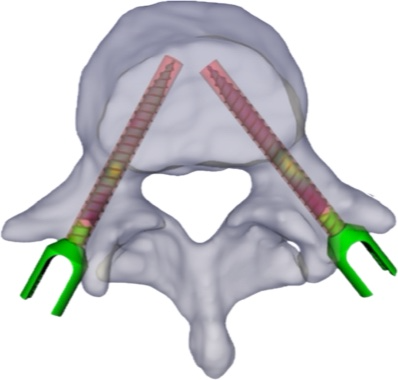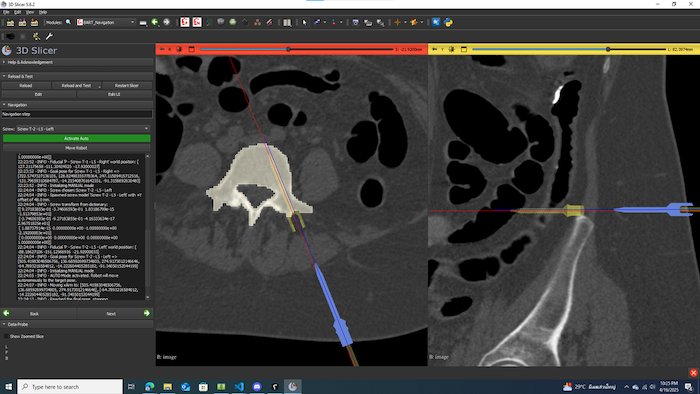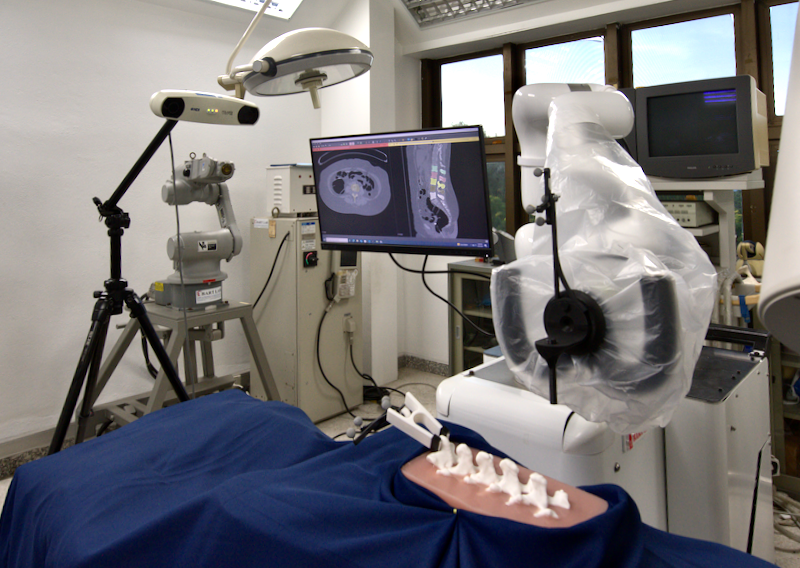eXtensions - Monday 23 June 2025
By Graham K. Rogers
![]()
Every engineering student in Thailand produces a final year project. Each year the Engineering Faculty displays posters of their efforts at the Prince Mahidol Hall. Several projects caught my eye this year. One of the three Gold Prize winners was a project on robotic assistance for spinal surgery.

Orthopedic surgery has come a long way since its dubious origins with the "sawbones" doctors. In the 19th century plaster of Paris was used in the treatment of fractures to limbs. At about the same time, pins and screws were developed to fix limbs. The vertebral screw and pedicle screw were first used in the USA in the 1940s. There were reports at that time concerning difficulties in placement. In cases of bent or abnormal vertebrae surgical processes have improved considerably since then. However, despite the use of sensors and the extreme care taken by physicians, there is sometimes misalignment "due to the complex anatomy of the spine and the limited visibility" (Sakol Nakdhamabhorn, et al).
The Center for Biomedical and Robotics Technology (BART Lab) at the Faculty of Engineering, Mahidol University, has worked on a number of robotic solutions that can be used in surgery and other medical applications, including surgical navigation systems. Examples include the exact placement of probes used in breast cancer surgery, and an image-guided robot used in hair transplant surgery.

A number of papers published by researchers at the BART Lab have examined robot-assisted spinal surgery. For their senior year capstone project a group of three students on the Biomedical Engineering (International) program, working under Dr. Jackrit Sutthakorn, extended the work on an ongoing project for a spinal surgery robot: protocol, design, control, navigation, and software.
The main reason for this type of surgery is scoliosis: abnormal curvature of the spine (S or C shaped). Other spinal problems that need fixing with screws can benefit from this type of surgery. Robot technology is used to ensure the alignment of the screws before the surgeon inserts them into the vertebrae. The student group worked on the robot hardware and on basic software development. The project uses robot access to assist the surgeon: to hold or guide the surgical tool. The mechanical backbone for the trajectory execution is a robot arm with 6 degrees of movement; an adapter holds the drill; and an infrared tracker provides the tracking coordinates in real time.

The project software controls pre-operative planning, navigation of the equipment, and robot control. Using automatically produced segmentations from CT scans the custom Python/C++ module is used to visualize the target vertebra. Previews of the subject are used to map tracker coordinates into the system which overlays the planned trajectories for the surgery onto the actual robot.

Testing is carried out on a phantom: 3D-printed silicone in the shape of vertebrae and the spine. The phantom, which accurately mimics soft tissue, allows "safe surgical training, surgical planning and patient understanding" Higgins et al. As it stands, the project can perform surgery on up to 3 vertebrae. Accuracy is within acceptable surgical limits. In the future, the students expect that this will be further tested on cadavers. Currently, the project is able to use images from the planning stage of surgery. They hope to improve this for use with fluoroscope images to provide real-time position imaging.
Over the last 30 years, the engineering departments of the Faculty of Engineering have worked to develop several real and potential solutions for problems in society. Research carried out by the students and lecturers has helped develop projects for medical, social, environmental and other areas, demonstrating the responsibility that guides the Faculty of Engineering at Mahidol University.
For more information:
Department of Biomedical Engineering
+66(0)2 889-4255
egbemahidol@gmail.com
Graham K. Rogers teaches at the Faculty of Engineering, Mahidol University in Thailand. He wrote in the Bangkok Post, Database supplement on IT subjects. For the last seven years of Database he wrote a column on Apple and Macs. After 3 years writing a column in the Life supplement, he is now no longer associated with the Bangkok Post. He can be followed on X (@extensions_th). The RSS feed for the articles is http://www.extensions.in.th/ext_link.xml - copy and paste into your feed reader.

For further information, e-mail to
Back to
eXtensions
Back to
Home Page